10 Best Herbal Creams For Amenorrhea

Herbal creams for amenorrhea are topical treatments that incorporate natural ingredients believed to support hormonal balance and menstrual regularity.
These creams often contain herbs such as ginger, turmeric, and fenugreek, which are traditionally used to stimulate blood flow and regulate menstrual cycles. While they may offer some relief for mild hormonal imbalances, their effectiveness can vary and is not universally supported by clinical research. It is important to consult with a healthcare provider before using herbal creams, especially if there are underlying medical conditions or if other treatments are being considered.
Overall, herbal creams should be viewed as a complementary approach rather than a primary treatment for amenorrhea.
FREE Herb Drying Checklist
How to make sure every batch retains maximum flavor, color, and aroma without the risk of mold or over-drying. Eliminate guesswork and trial-and-error, making herb drying faster, easier, and more efficient every time.
Table of Contents
1. Vitex agnus-castus
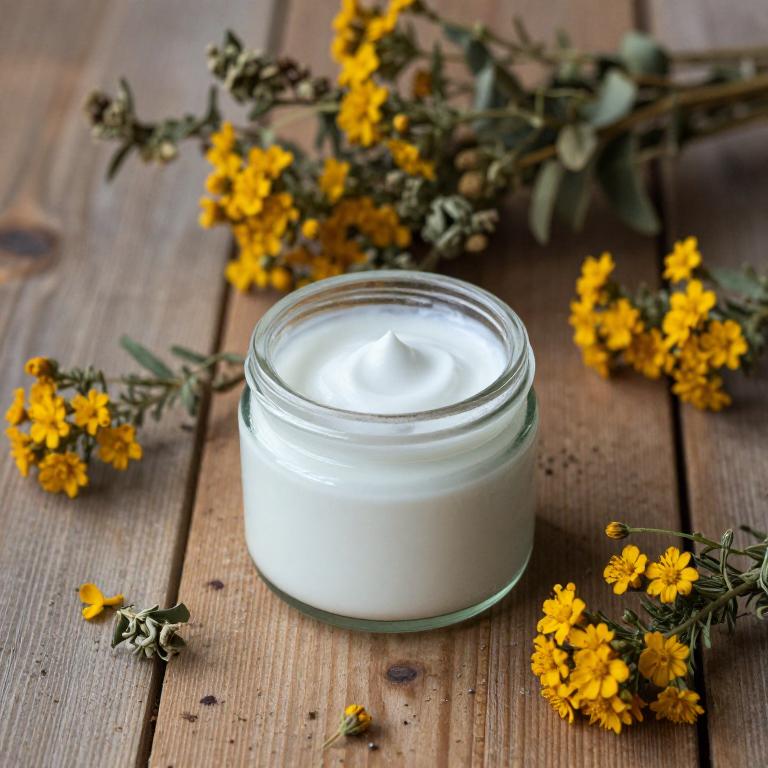
Vitex agnus-castus, commonly known as chaste tree berry, is often used in herbal remedies to support hormonal balance and may be incorporated into creams for the management of amenorrhea.
These creams typically contain extracts of Vitex agnus-castus, which are believed to influence the pituitary gland and regulate the production of luteinizing hormone, potentially helping to restore menstrual cycles. While some studies suggest that Vitex may help induce menstruation in women with irregular or absent periods, its effectiveness can vary among individuals. Herbal creams containing Vitex are generally considered safe for topical use, though they should not replace professional medical advice or treatment.
It is important to consult a healthcare provider before using any herbal remedy, especially for conditions like amenorrhea, to ensure safety and appropriateness for individual health needs.
2. Cimicifuga racemosa
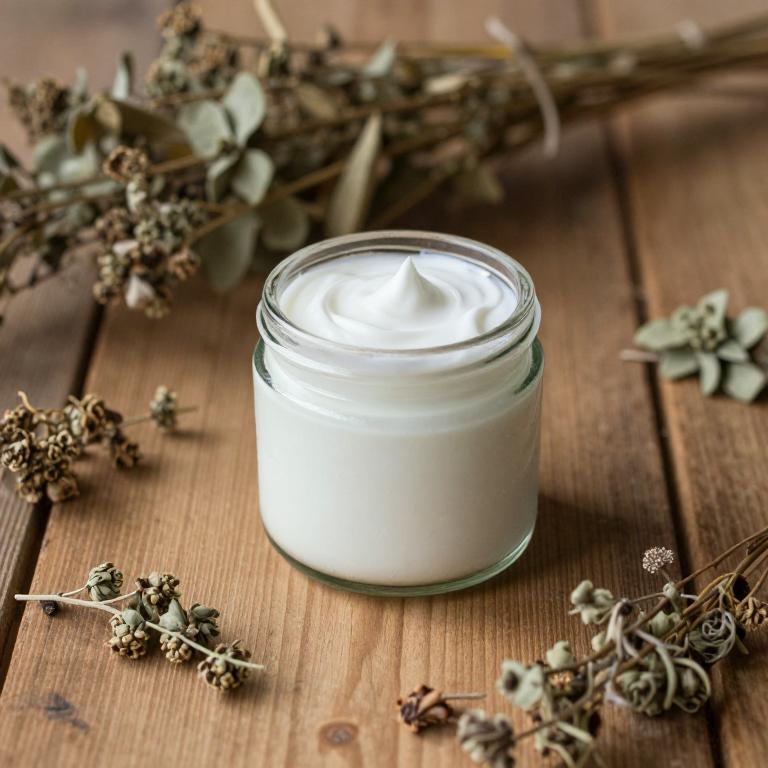
Cimicifuga racemosa, commonly known as black cohosh, is a herbal remedy that has been traditionally used to support women's health, particularly in the management of menopausal symptoms.
Herbal creams containing Cimicifuga racemosa are formulated to provide localized relief and may help alleviate symptoms associated with amenorrhea, such as irregular menstrual cycles and hormonal imbalances. These creams are typically applied topically to the lower abdomen or back, where they are believed to exert a soothing effect on the reproductive system. While some studies suggest that black cohosh may influence hormonal activity, it is important to consult a healthcare provider before using these products, as they may interact with other medications or have side effects.
Overall, Cimicifuga racemosa herbal creams are considered a natural alternative for women seeking non-hormonal support for amenorrhea, though their efficacy can vary among individuals.
3. Rosa canina
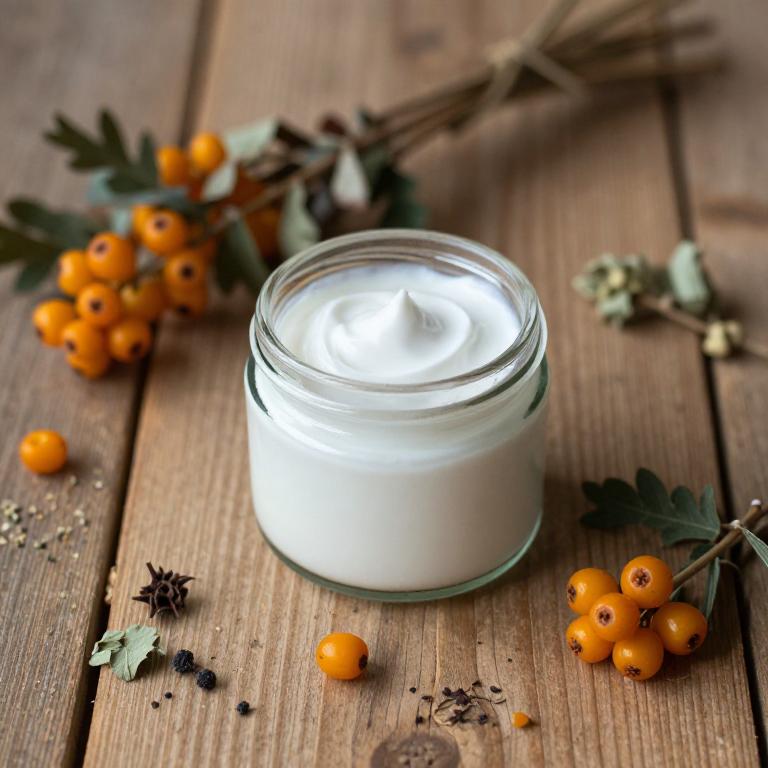
Rosa canina, commonly known as rosehip, has been traditionally used in herbal medicine for its rich content of essential fatty acids, vitamins, and antioxidants, which may support hormonal balance and overall reproductive health.
Rosa canina herbal creams are often formulated with rosehip oil and other natural ingredients to promote skin health and may be used as part of a holistic approach to managing amenorrhea, a condition characterized by the absence of menstrual periods. While there is limited scientific evidence directly linking rosehip creams to the treatment of amenorrhea, some practitioners suggest that the anti-inflammatory and regenerative properties of rosehip oil may help alleviate symptoms associated with hormonal imbalances. It is important to consult with a healthcare provider before using any herbal remedies, as amenorrhea can have various underlying causes that require professional diagnosis and treatment.
Overall, rosa canina herbal creams may complement other treatments but should not be considered a standalone solution for amenorrhea.
4. Urtica dioica
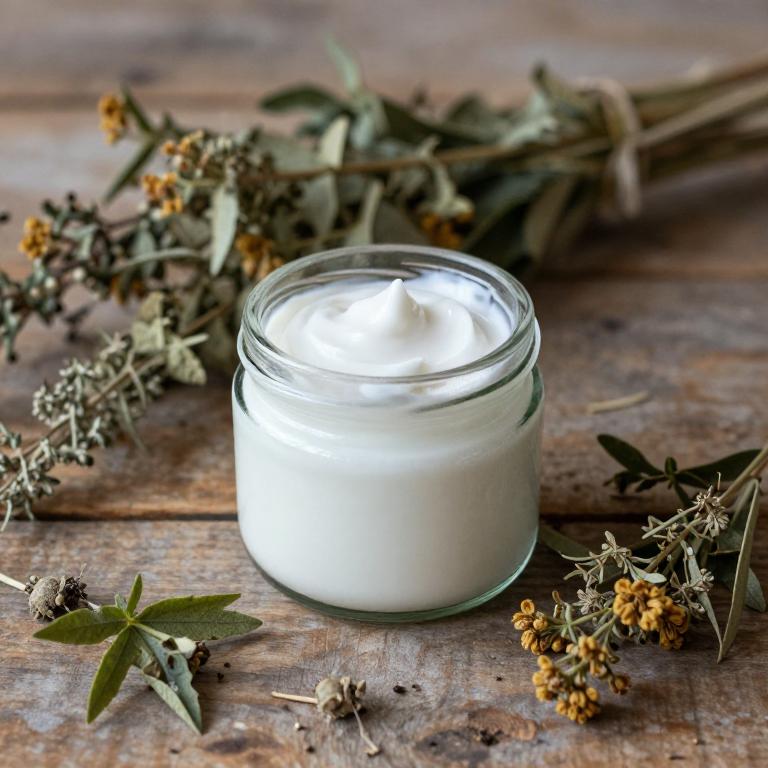
Urtica dioica, commonly known as stinging nettle, has been traditionally used in herbal medicine for its potential health benefits, including its possible role in managing amenorrhea, which is the absence of menstrual periods.
Herbal creams containing Urtica dioica are sometimes recommended to support hormonal balance and improve blood flow to the reproductive organs. These creams may help alleviate symptoms associated with amenorrhea by promoting circulation and reducing inflammation in the pelvic region. However, it is important to consult with a healthcare professional before using such remedies, as they may interact with other medications or have side effects.
While some anecdotal evidence suggests benefit, scientific research on the effectiveness of Urtica dioica creams for amenorrhea is limited, and more studies are needed to confirm their efficacy.
5. Sanguisorba officinalis
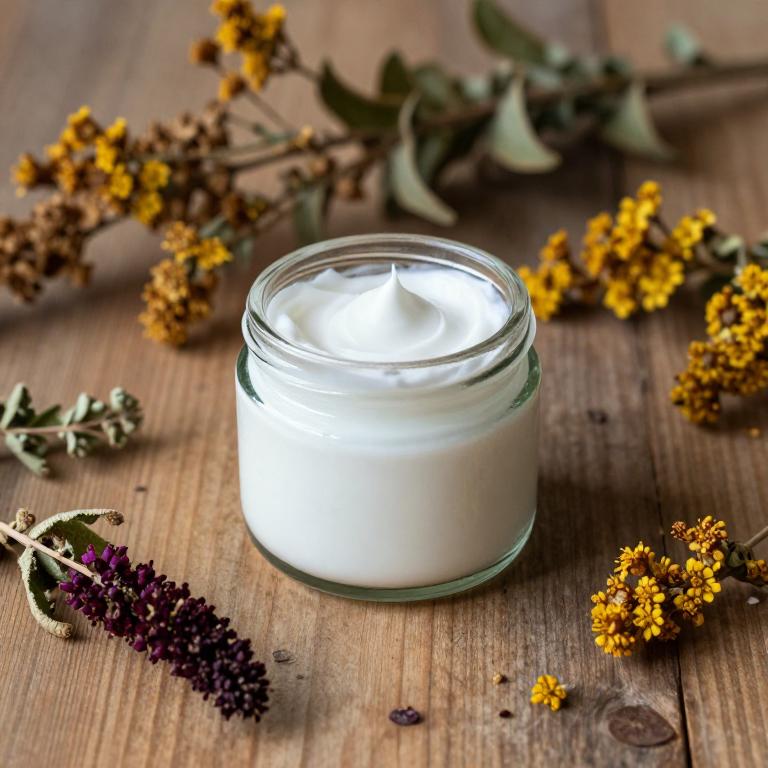
Sanguisorba officinalis, commonly known as lesser bistort, has been traditionally used in herbal medicine for its potential benefits in treating amenorrhea, or the absence of menstrual periods.
The plant contains compounds such as tannins, flavonoids, and mucilage, which may support hormonal balance and uterine health. Herbal creams infused with Sanguisorba officinalis are believed to help stimulate menstrual flow by improving circulation and reducing inflammation in the reproductive system. These creams are often used as part of a holistic approach to managing menstrual irregularities, alongside dietary and lifestyle changes.
However, it is important to consult with a healthcare professional before using such remedies, especially for individuals with underlying medical conditions or those taking other medications.
6. Foeniculum vulgare
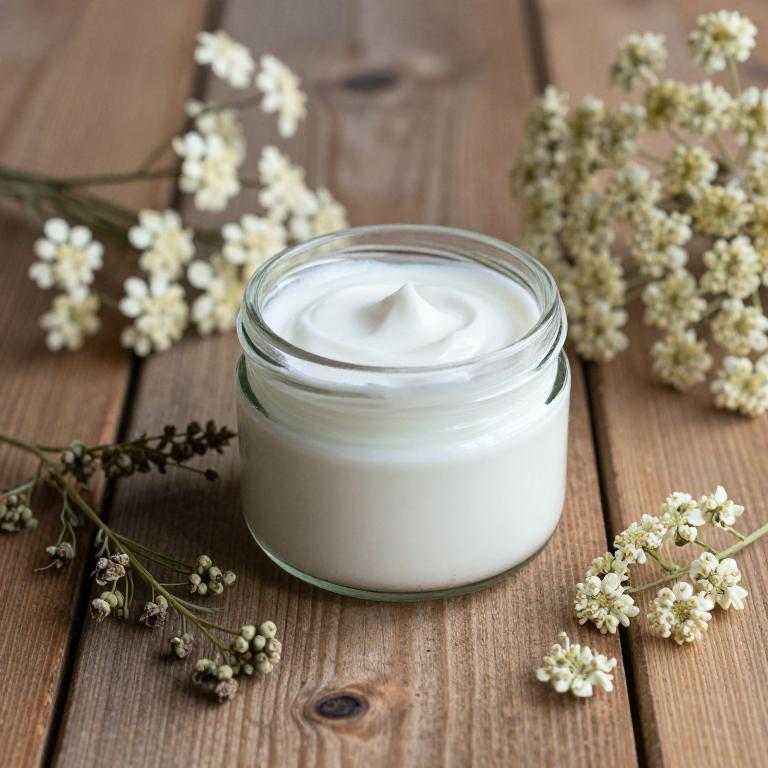
Foeniculum vulgare, commonly known as fennel, has been traditionally used in herbal medicine for various health conditions, including menstrual disorders.
Fennel contains phytoestrogens, which may help regulate hormonal imbalances that contribute to amenorrhea. Herbal creams infused with fennel essential oil are sometimes used topically to support reproductive health and alleviate menstrual discomfort. However, it is important to consult a healthcare provider before using fennel-based products, as they may interact with other medications or have side effects.
While some anecdotal evidence suggests potential benefits, scientific research on fennel's efficacy for amenorrhea remains limited.
7. Cnicus benedictus
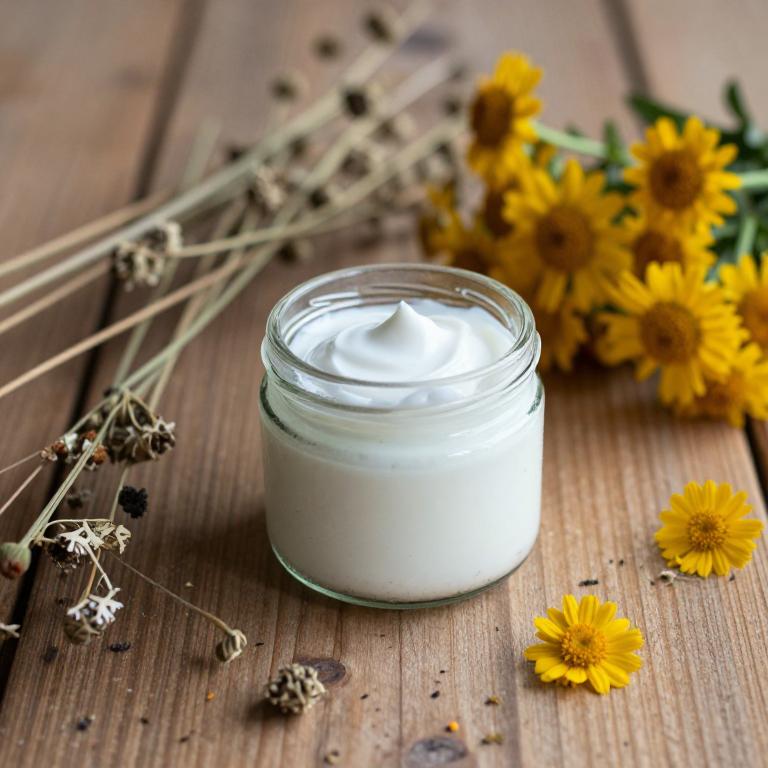
Cnicus benedictus, also known as blessed thorn, has been traditionally used in herbal medicine to support hormonal balance and may be beneficial for women experiencing amenorrhea, a condition characterized by the absence of menstrual periods.
Herbal creams containing Cnicus benedictus are believed to work by promoting circulation and stimulating the reproductive system, which may help regulate menstrual cycles. These topical formulations are often used in conjunction with other herbal remedies to enhance their effectiveness. While scientific research on Cnicus benedictus is limited, many practitioners recommend it as a natural alternative for those seeking to address amenorrhea without pharmaceutical interventions.
As with any herbal treatment, it is advisable to consult with a healthcare provider before use, especially if there are underlying health conditions or if other medications are being taken.
8. Lepidium meyenii
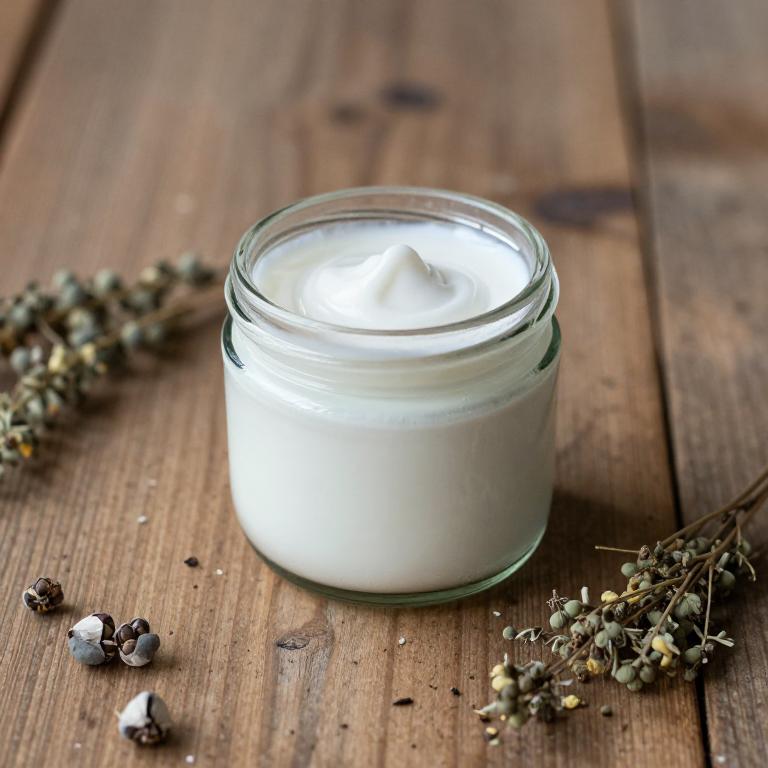
Lepidium meyenii, commonly known as Peruvian maca, has been traditionally used in herbal medicine for its potential benefits in regulating menstrual cycles.
While it is not a cream, some formulations may incorporate maca extract into topical applications to support hormonal balance and alleviate symptoms associated with amenorrhea. These herbal creams are believed to enhance blood circulation and reduce pelvic congestion, which may help in restoring regular menstrual flow. However, scientific evidence supporting the efficacy of maca-based creams for amenorrhea is limited, and more research is needed to confirm their effectiveness.
It is advisable to consult a healthcare professional before using any herbal remedies, including maca-based products, for menstrual disorders.
9. Paeonia lactiflora
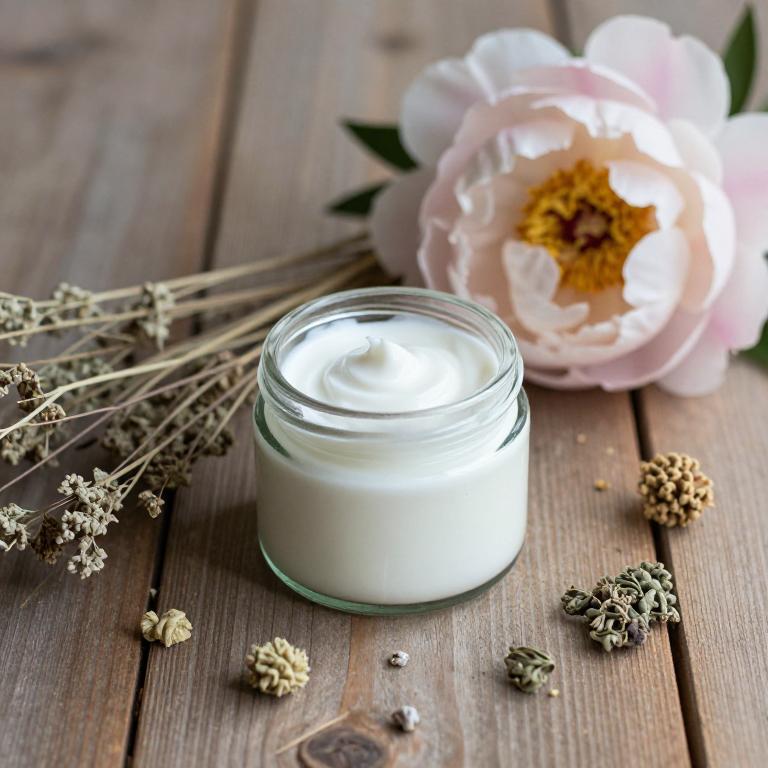
Paeonia lactiflora, commonly known as the peony, has been traditionally used in herbal medicine for its potential benefits in regulating menstrual cycles.
Herbal creams infused with Paeonia lactiflora are believed to support hormonal balance and may help alleviate symptoms associated with amenorrhea, the absence of menstruation. These creams often contain other complementary herbs that enhance their efficacy, such as chaste tree or ginger. While some studies suggest that Paeonia lactiflora may influence uterine function, more research is needed to confirm its effectiveness for amenorrhea.
As with any herbal remedy, it is advisable to consult a healthcare professional before use, especially for individuals with underlying health conditions or those taking other medications.
10. Paeonia suffruticosa
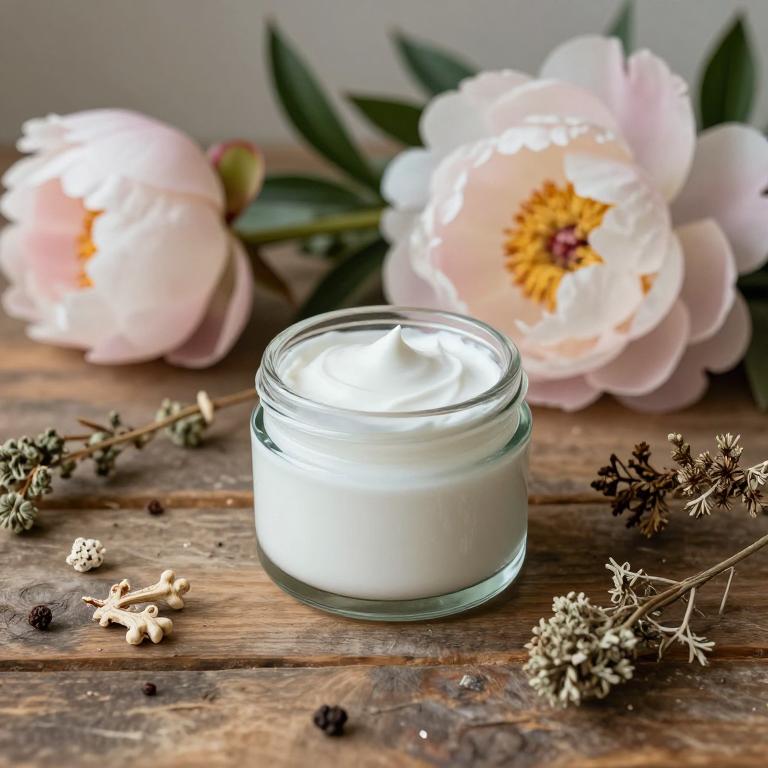
Paeonia suffruticosa, commonly known as tree peony, has been traditionally used in herbal medicine for its potential benefits in regulating menstrual cycles.
Herbal creams made from Paeonia suffruticosa are believed to support hormonal balance and may help alleviate symptoms associated with amenorrhea, which is the absence of menstruation. These creams are often formulated with other complementary herbs to enhance their effectiveness in promoting uterine health and blood circulation. While some studies suggest that Paeonia suffruticosa may have estrogen-like properties, more research is needed to confirm its efficacy and safety for treating amenorrhea.
As with any herbal remedy, it is advisable to consult a healthcare professional before use, especially for individuals with underlying medical conditions or those taking other medications.